Abstract
Patterns of environmental and biological monitoring for lead exposure were surveyed in lead-using industries in California. Employer self-reporting indicates a large proportion of potentially lead-exposed workers have never participated in a monitoring program. Only 2.6 percent of facilities have done environmental monitoring for lead, and only 1.4 percent have routine biological monitoring programs. Monitoring practices vary by size of facility, with higher proportions in industries in which larger facilities predominate. Almost 80 percent of battery manufacturing employees work in job classifications which have been monitored, versus only 1 percent of radiator-repair workers. These findings suggest that laboratory-based surveillance for occupational lead poisoning may seriously underestimate the true number of lead poisoned workers and raise serious questions regarding compliance with key elements of the OSHA Lead Standard.
Full text
PDF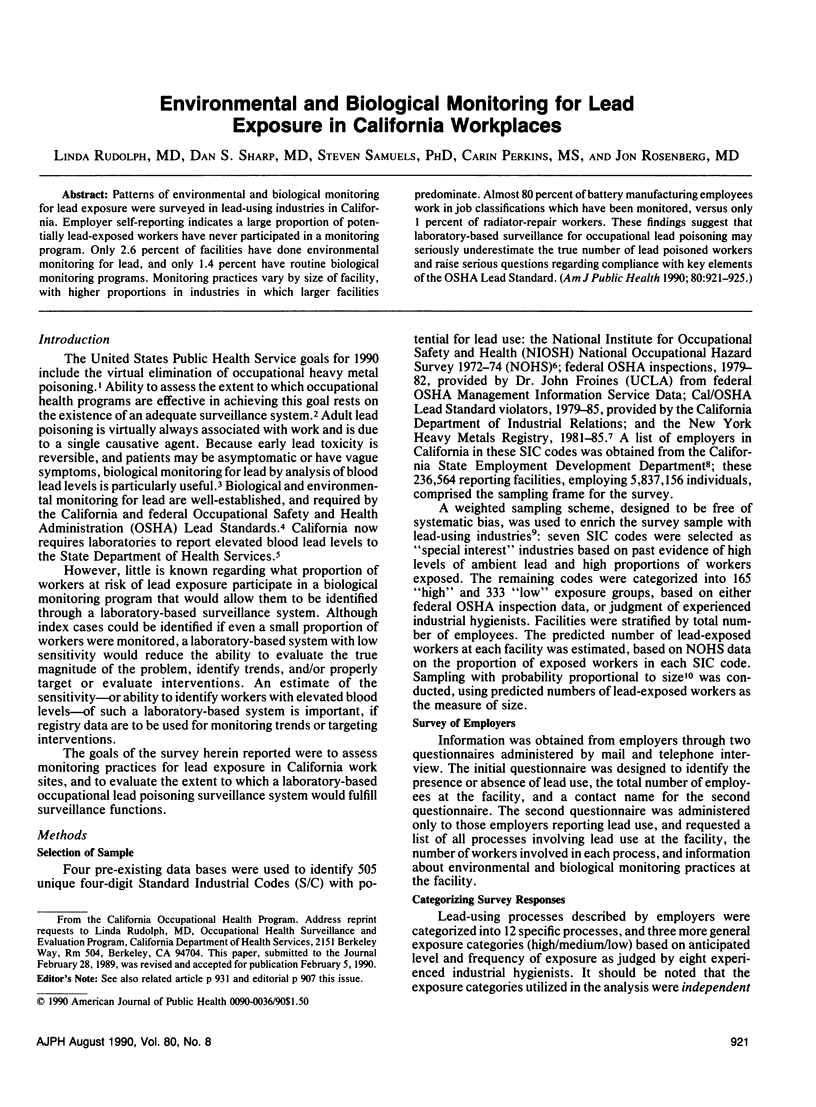
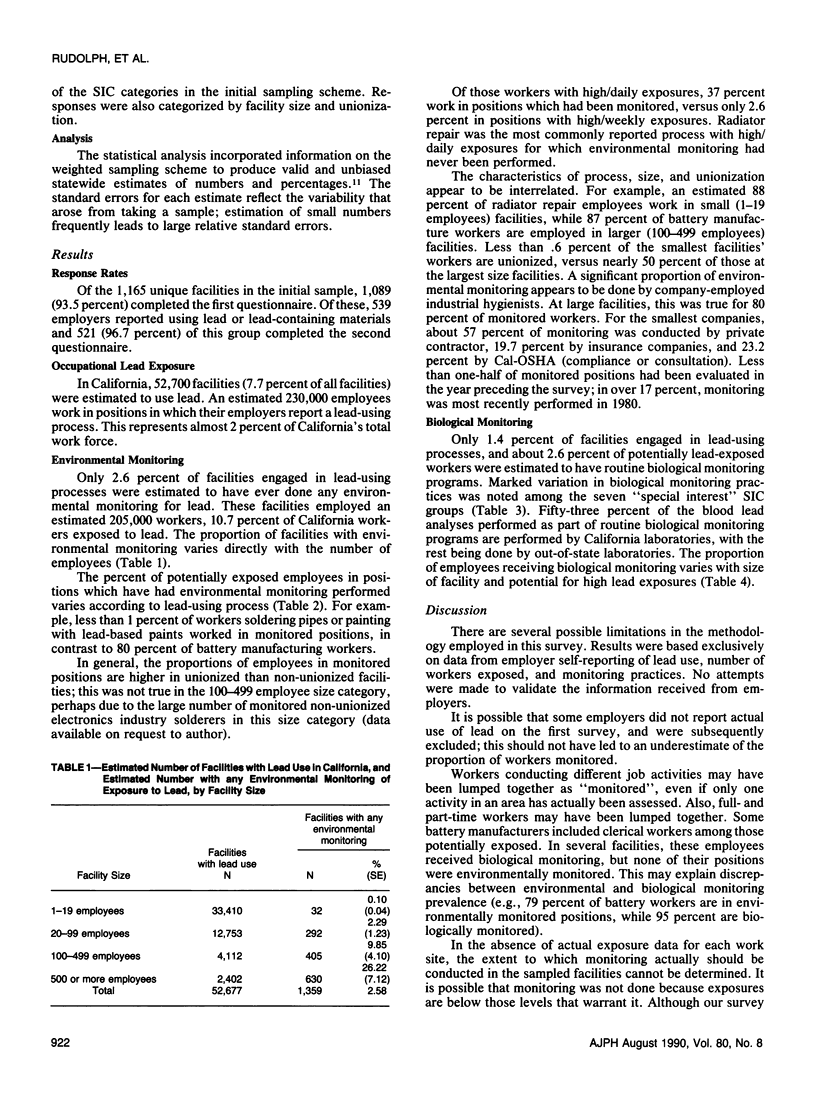
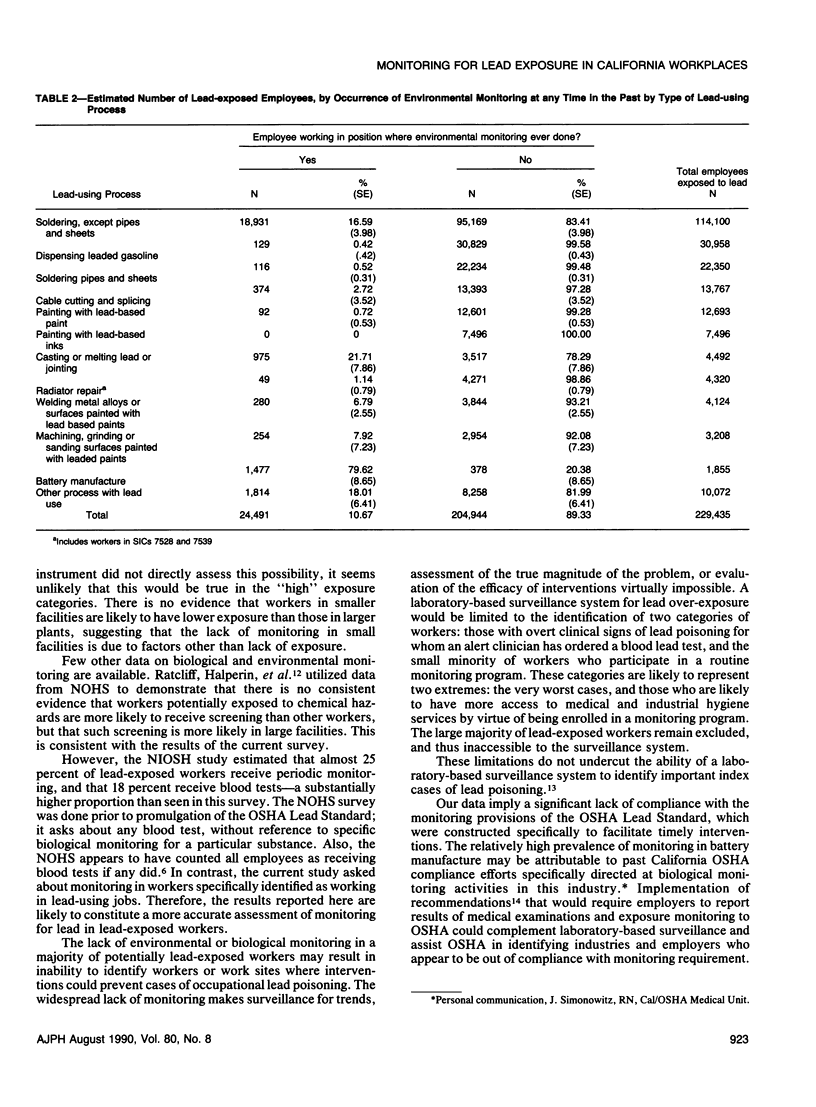
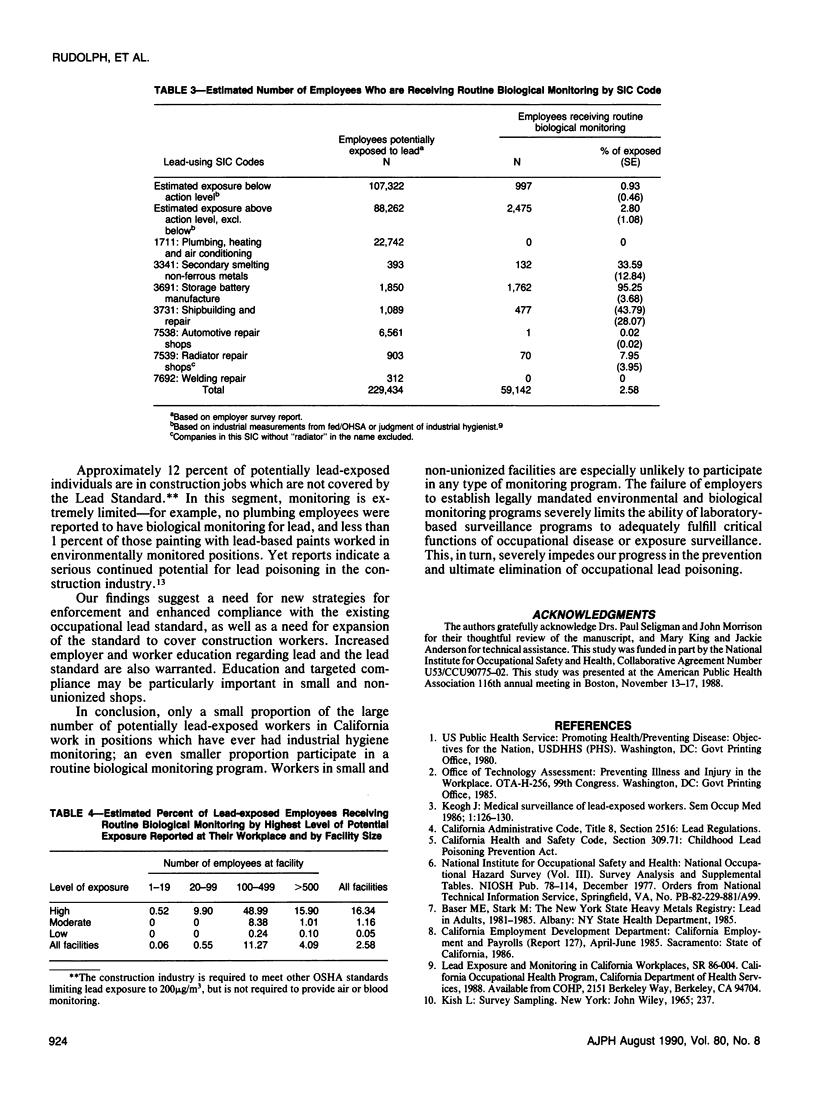
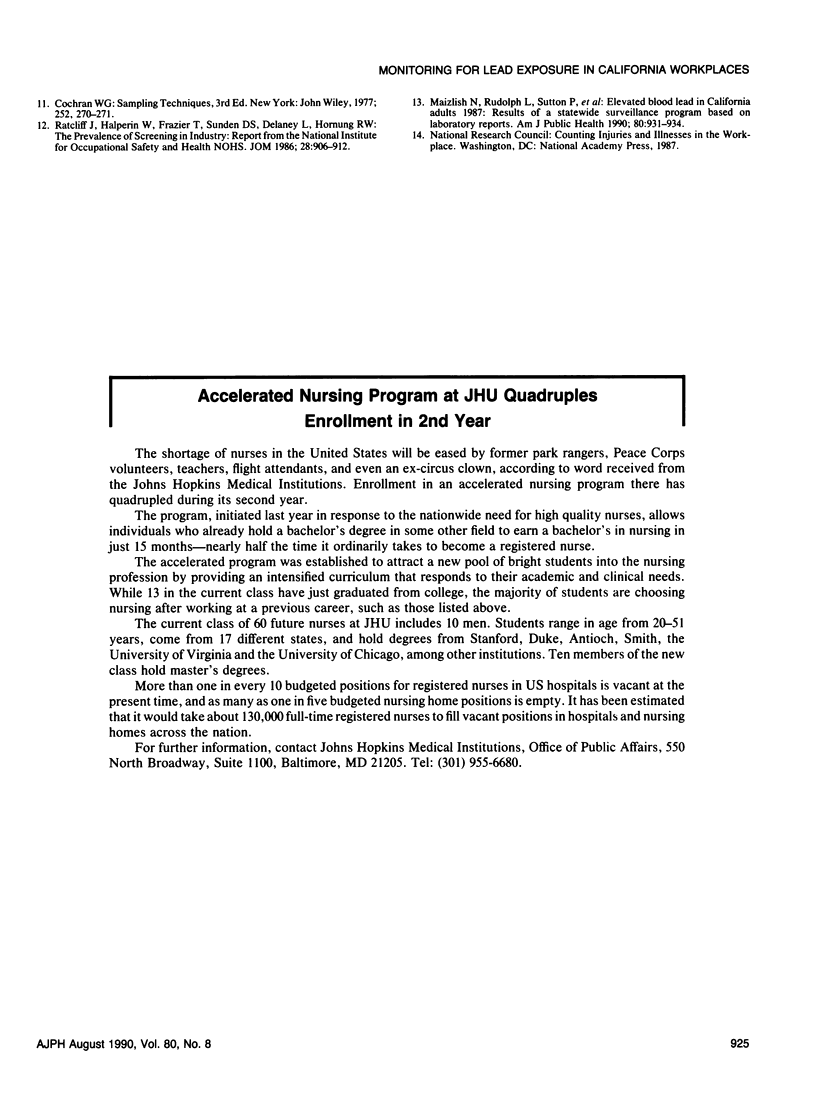
Selected References
These references are in PubMed. This may not be the complete list of references from this article.
- Maizlish N., Rudolph L., Sutton P., Jones J. R., Kizer K. W. Elevated blood lead in California adults, 1987: results of a statewide surveillance program based on laboratory reports. Am J Public Health. 1990 Aug;80(8):931–934. doi: 10.2105/ajph.80.8.931. [DOI] [PMC free article] [PubMed] [Google Scholar]
- Ratcliffe J. M., Halperin W. E., Frazier T. M., Sundin D. S., Delaney L., Hornung R. W. The prevalence of screening in industry: report from the National Institute for Occupational Safety and Health National Occupational Hazard Survey. J Occup Med. 1986 Oct;28(10):906–912. doi: 10.1097/00043764-198610000-00003. [DOI] [PubMed] [Google Scholar]


